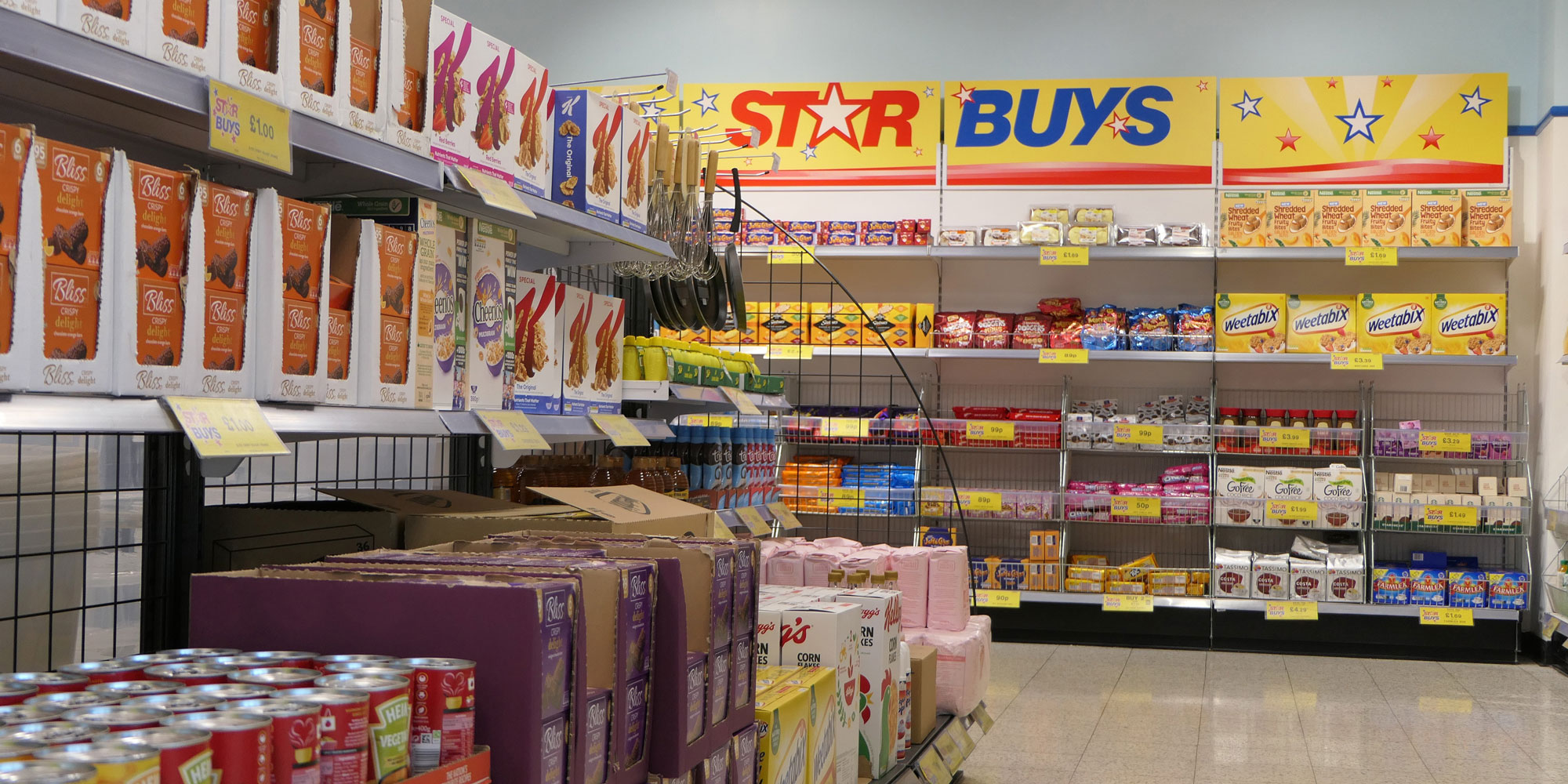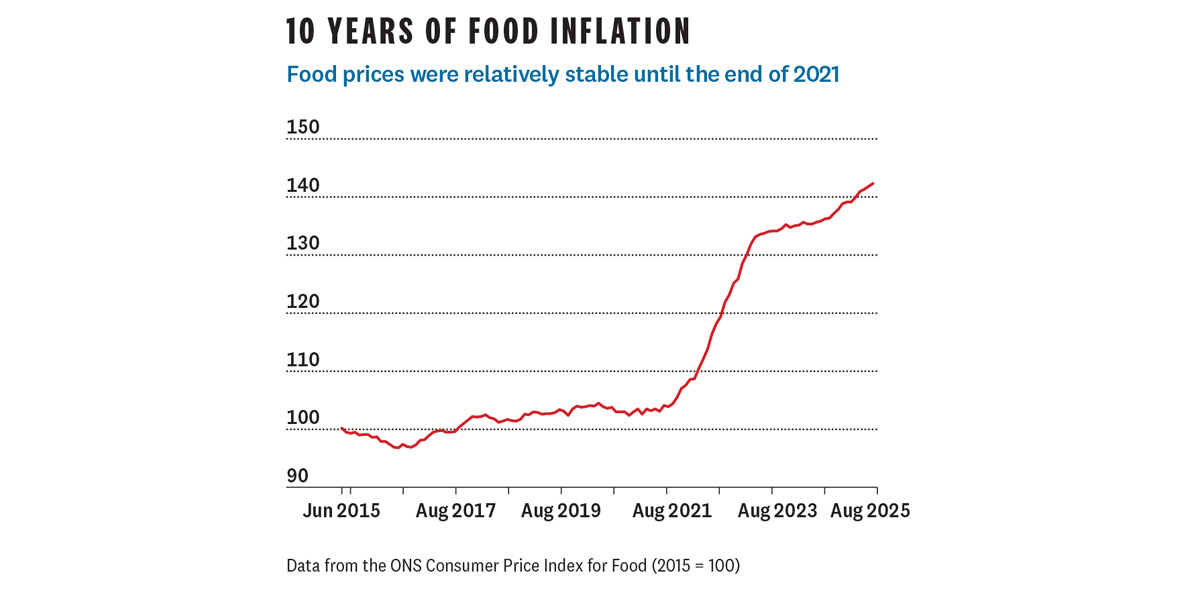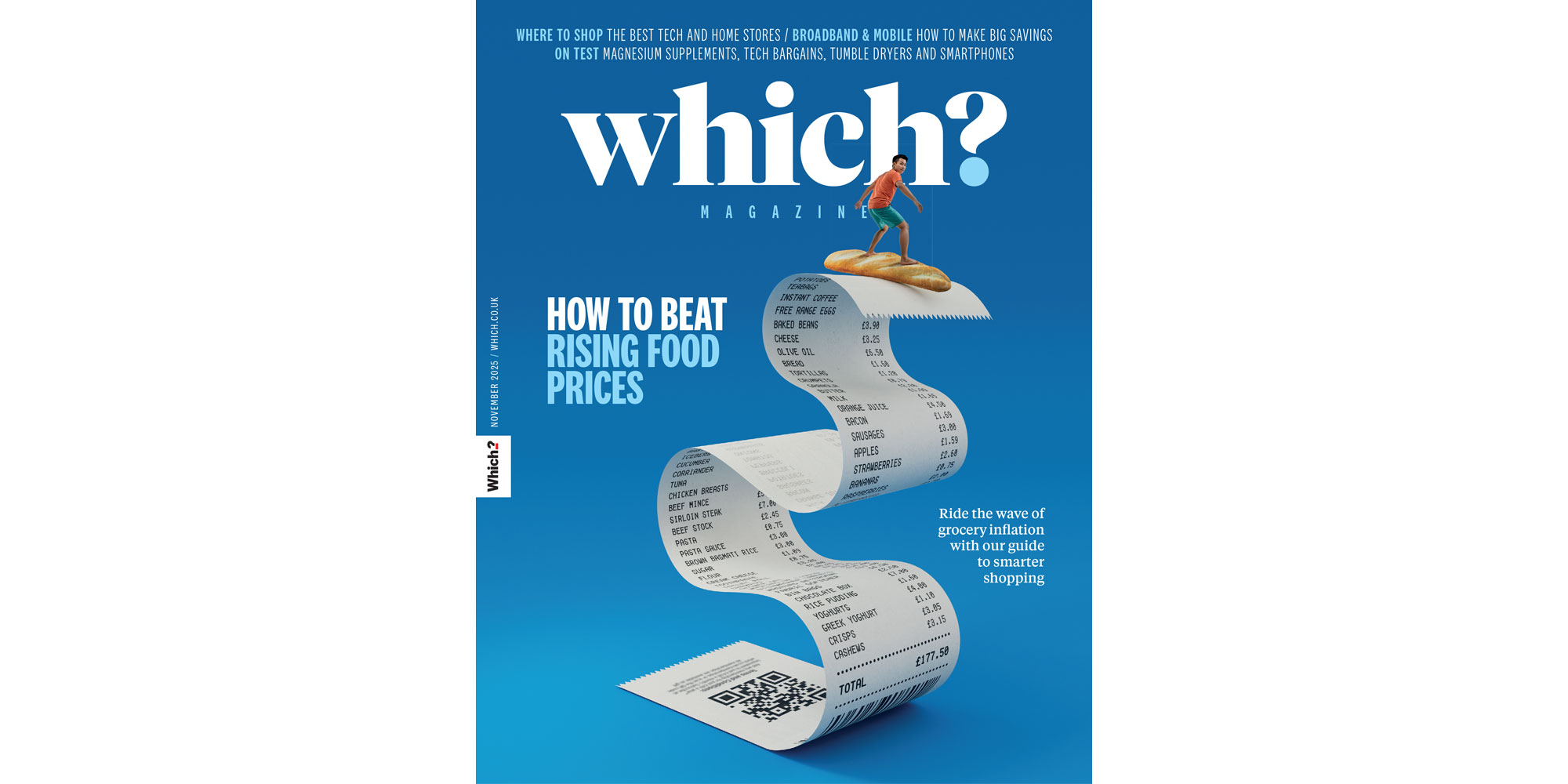By clicking a retailer link you consent to third-party cookies that track your onward journey. This enables W? to receive an affiliate commission if you make a purchase, which supports our mission to be the UK's consumer champion.
Can Home Bargains and B&M save you money on groceries?

While the worst of the cost-of-living crisis has eased, grocery prices remain high and are forecast to rise for the rest of the year.
You might feel like you haven’t got any fight left, but we’ve taken our pricing research to another level to find even smarter ways to help you tackle your food bills.
What groceries do Home Bargains and B&M sell?
Home Bargains and B&M are well-known names on the high street, but would you think of shopping for groceries there?
If not, then maybe you should. They are two of the biggest non-supermarket discounters that sell groceries, stocking what is perhaps a surprising range of everyday food, drink, homeware and health and beauty products.
How do they compare to major supermarkets?
We looked at the average price of 256 everyday branded products – from Tetley tea to John West tuna – at Home Bargains and B&M. We then compared them to Asda, Morrisons, Sainsbury's, Tesco, Ocado and Waitrose.
| Retailer | Average price for 256 items |
| Home Bargains | £636.22 |
| B&M | £669.08 |
| Asda | £738.73 |
| Morrisons (with More) | £743.28 |
| Tesco (with Clubcard) | £743.82 |
| Sainsbury's (with Nectar) | £755.27 |
| Morrisons | £764.94 |
| Ocado | £774.29 |
| Waitrose | £804.09 |
| Tesco | £816.99 |
| Sainsbury's | £841.15 |
Prices are three-month averages from April to July 2025 and include regular discounts, plus multibuys and, where indicated, loyalty discounts. Ocado’s Price Promise offers customers a voucher for the difference with Tesco on many items. Data from an independent supplier.
Home Bargains was the cheapest at £636 – 24% less than the priciest supermarket, Sainsbury’s, where they cost £841 if you didn’t have a Nectar card (and £755 if you did).
B&M came in second-cheapest, at £669.
Most of the products in our analysis were branded tinned or packet food, homecare products or health and beauty items. So although our research showed that Home Bargains and B&M were, on average, cheaper than the major supermarkets for these items, you may still need to go to elsewhere for a full shop with fresh produce and a larger range of own-label groceries.
- Find out more: cheapest supermarket of the month
Can they beat Aldi and Lidl?
Aldi and Lidl have long been seen as the cheapest places to buy groceries.
Many of the products weren't available at Aldi and Lidl because they tend to stock fewer branded groceries.
But we did find 17 products that were also available at Aldi and Lidl. Home Bargains was the cheapest in this comparison, too.
| Retailer | Average price for 17 items |
| Home Bargains | £44.55 |
| Tesco (with Clubcard) | £45.82 |
| Lidl | £46.53 |
| Asda | £46.96 |
| Aldi | £47.28 |
| B&M | £47.32 |
| Tesco | £47.35 |
| Morrisons (with More) | £47.80 |
| Ocado | £48.12 |
| Sainsbury's (with Nectar) | £48.79 |
| Morrisons | £49.17 |
| Sainsbury's | £51.88 |
| Waitrose | £52.53 |
Prices are three-month averages from April to July 2025 and include regular discounts, plus multibuys and, where indicated, loyalty discounts. Ocado’s Price Promise offers customers a voucher for the difference with Tesco on many items. Data from an independent supplier.
- Find out more: Aldi Price Match scheme secrets
Which products had the biggest differences?
We found big differences across many everyday products, with some really jaw-dropping examples. Here are just a few:
- Nescafé Azera Americano Instant Coffee (90g) was an average of £3.49 at Home Bargains and B&M, or £7.25 at Tesco – a 108% difference. It was £5.56 at Tesco with a Clubcard - cheaper than if you didn't have one, but still 59% more than Home Bargains and B&M.
- Ambrosia Creamed Rice Pudding (400g) was an average of £1 at B&M and £1.89 at Sainsbury’s – a difference of 89%. It was £1.67 at Sainsbury’s with a Nectar card - cheaper, but still 67% more than B&M.
- Loyd Grossman Tomato And Basil Pasta Sauce (350g) was an average of £1.59 at Home Bargains, and £3 at Tesco and Sainsbury’s – that’s 89% more. It was £2.18 at Sainsbury’s and £2.33 at Tesco for loyalty card members, still 37% and 47% more respectively.

Why is Home Bargains so cheap?
Home Bargains’ strapline is ‘Top Brands, Bottom Prices’.
Home Bargains has more than 600 stores and sells everything from food and drink to gardening products.
It stocks many of the big-brand groceries available at more conventional supermarkets, and some stores also offer fresh food.
Managers are reportedly given freedom to arrange shelves as they see fit, without the prescriptive plans used by other retailers. This is said to help with efficiency and stock availability. It has highly automated warehouses and invests little in advertising.
Some products in variety retailers may also be on offer to clear stock nearing the end of its shelf life or not as widely available as they are in supermarkets.
- Find out more: how to spend less at the supermarket
Why are food prices so high?
Food inflation wasn’t really on the radar of most shoppers until around 2021, when Covid-related disruption, the war in Ukraine and other global supply issues sent it soaring.
It's currently at 5.4%, according to our Supermarket Inflation Tracker, and forecast to rise for the rest of this year. Poor weather and bad harvests have pushed up global prices for many items, and higher labour costs in the UK may have also had an effect.

So what can you do as a shopper? Well, switching supermarkets or buying some groceries in Home Bargains and B&M might help.
It's also worth knowing that inflation isn’t equally spread out – it varies depending on what type of groceries you buy and where you shop. Recently, chocolate has seen the highest inflation, up 16.7% across the past year. Meanwhile, cereals, yoghurts, crisps and vegetables are up 3.4% or less. So switching what you buy could help.
Joining a supermarket loyalty scheme can also make a difference – with savings of around 7% on a large trolley of popular groceries at Tesco and Sainsbury’s. Don’t feel pressured, though. It’s worth remembering that the cheapest major supermarket, Aldi, doesn’t have a loyalty scheme at all.
- Find out more: loyalty schemes compared
This story was part of a feature called 'How to beat rising food prices' that appears in the November edition of Which? magazine.

Join Which? to read the full investigation.




